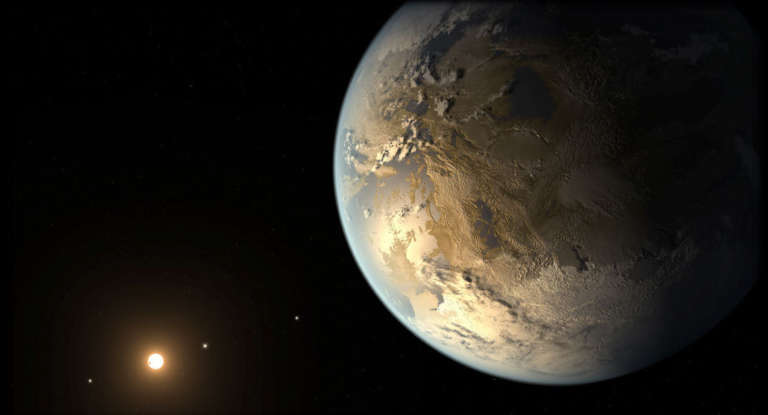Planetary Radio • Jun 24, 2014
Elisa Quintana on the Discovery of Earth 2.0
On This Episode

Elisa Quintana
Kepler Mission Research Scientist for SETI Institute
Kepler-186f is the very first exoplanet that is both the size of our own world and in the habitable zone surrounding its star. SETI Institute scientist Elisa Quintana is lead author of the paper announcing its existence. Emily Lakdawalla describes several books about Curiosity, the Mars Science Laboratory, including her own work in progress. Bill Nye revisits a big science story that has become a tale of how science works so well. Bruce Betts is Principal Investigator for LIFE, the Living Interplanetary Flight Experiment, just chosen by NASA for study that may lead to inclusion on the Asteroid Redirect Mission. We’ve also got another Planetary Radio t-shirt for the winner of this week’s space trivia contest.

Related Links:
- Elisa Quintana Writes About Kepler-186f Discovery
- Big Bang Gravitational Wave Team Backtracks
- Book Review: Mars Rover Curiosity: An Inside Account
- NASA Selects Planetary Society LIFE Proposal
- Geoff Notkin’s “Meteorite Hunting—How To Find Treasure From Space”
This week's prize is a Planetary Radio t-shirt.
This week's question:
What are the Montes or mountains named for on Mercury?
To submit your answer:
Complete the contest entry form at http://planetary.org/radiocontest or write to us at [email protected] no later than Tuesday, July 1, at 8am Pacific Time. Be sure to include your name and mailing address.
Last week's question:
When did Venus Express enter orbit around Venus?
Answer:
The answer will be revealed next week.
Question from the week before:
What planet in our solar system has the most moons that are over 1,000 km in diameter, and how many of those moons does that planet have?
Answer:
With five of them, Saturn has the most moons that are greater than 1,000 kilometers in diameter, with Jupiter and Uranus tied for second with four each.


 Explore Worlds
Explore Worlds Find Life
Find Life Defend Earth
Defend Earth

